Cleavers (Galium aparine) are characterised for its ‘sticky’ seeds. Common in hedgerows it is introduced to fields via fur and clothing as well as contaminated seed.
Cleavers

What are cleavers?
Cleavers (Galium aparine) are a member of the Rubiaceae family and is an annual plant common to hedgerows and arable land, seeds spread on the fur of animals and individuals clothing.
Germinating in the autumn and the spring, cleavers are the most competitive broad-leaved weed of arable cropping. Readily responding to fertiliser inputs, cleavers grow rapidly to cause lodging and hinder cereal harvest. Additionally, the seeds can cause grain contamination and storage problems.
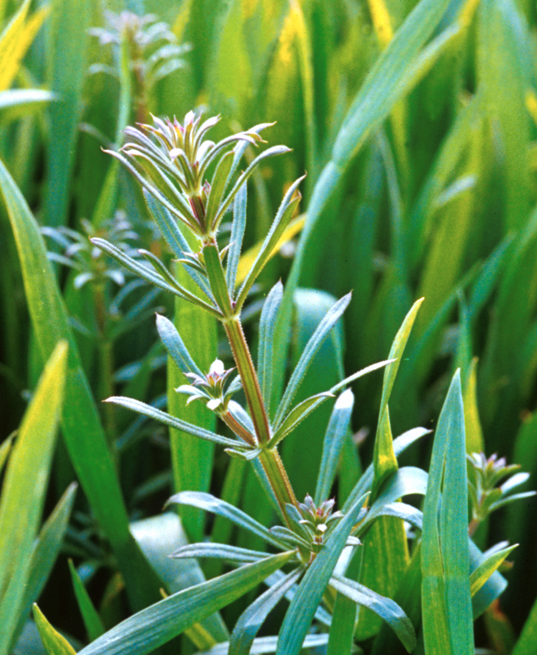
Cleaver cotyledons are notched at the tip and have long cotyledon stalks.
Weak sprawling stems, up to 1m in height, long bear whorls of 6-8 long leaves with a prominent central vein.
Tiny greenish-white flowers are borne in branching clusters from May to August.
Flowers develop into round, green or purple fruits 3-5mm in diameter.
Stems, leaves and seed have stiff hooked hairs.
Small hairy seeds, between 300-400 seeds per plant are produced.
How can I identify cleavers?
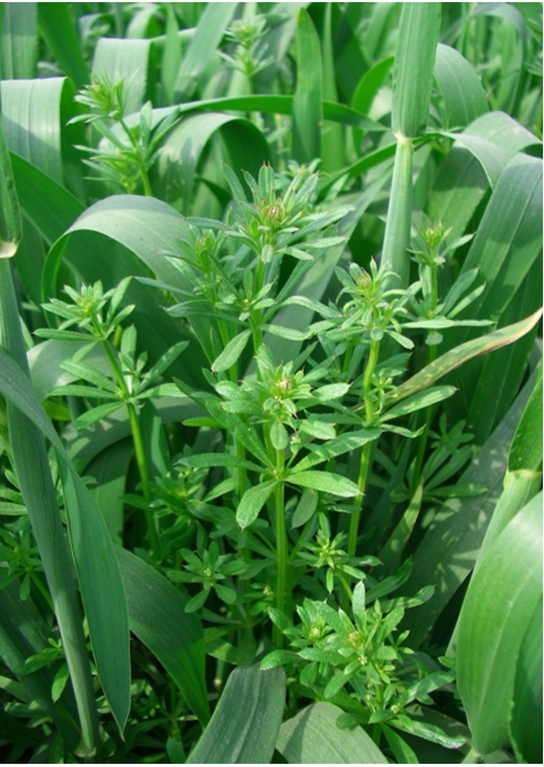 Fully formed
Fully formed
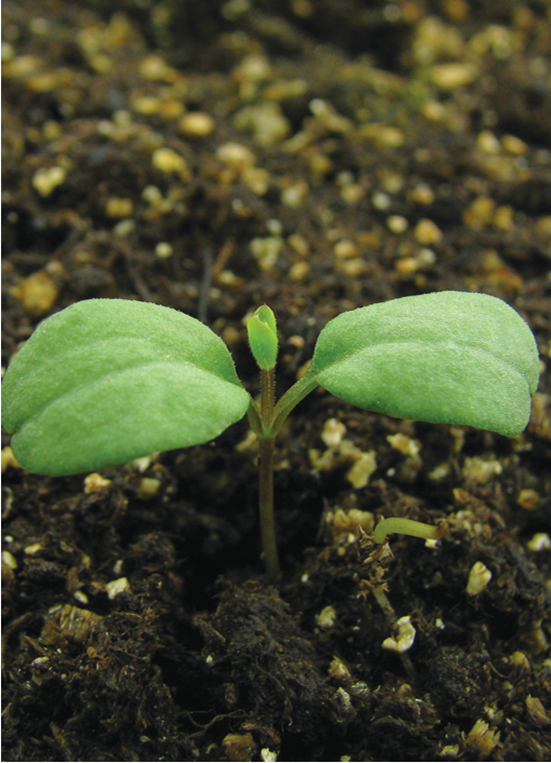 Cotyledon Stage
Cotyledon Stage
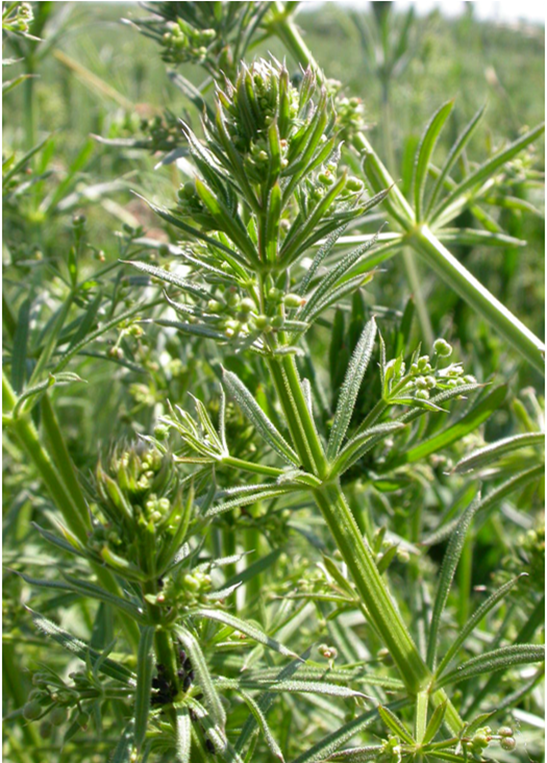 Closer look at flowers
Closer look at flowers
Ubiquitous to cultivated land throughout Britain, cleavers excel in moist, fertile soils.
Cleavers have characteristic notches on the tips of the cotyledons. Established plants have a climbing growth habit with weak branched stems that are hollow, square in section with ridges at the corners.
The leaves form whorls of four to eight at nodes on the stems, they have no leafstalk. Leaves and stem are covered with hooked hairs and spines. The whole plant feels sticky.
The flowers usually have four white petals, small and approximately 2mm in diameter, carried on a short straight stalk arising out of the bases of leaves.
Their seeds can last up to 6 years with a germination depth of 7cm, with each plant producing 300-400 seeds.
Why is identifying cleavers important?
At the cotyledon stage cleavers and ivy-leaved speedwell may be confused. Cleavers are distinguished by a notch in the cotyledon. Correctly identifying cleavers ensures the most effective product can be used. The use of Arylex containing products e.g. Zypar® or Pixxaro® EC or a florasulam containing product e.g. Spitfire® provides the best early season control before yield loss occurs.
Why are cleavers a problem?
Cleavers’ germination is triggered by cultivations and cold temperatures. Consequently, autumn flushes of cleavers can occur at high numbers. The autumn germinating seeds have been shown to be the most competitive to the cereal crop and produce most of the viable seeds. As the broad-leaved weed with the highest competitive index (3.0) it has been calculated that 1 cleavers plant/m2 results in a potential yield loss of 3.0% per hectare.
Typically, the point at which crop competition occurs is mid to late April and therefore, herbicide application at growth stage 30-31, coinciding with a T0 or T1 fungicide application would be an ideal time to spray the cleavers. The Arylex chemistry (Zypar® or Pixarro® EC) or florasulam contained within Spitfire®, Starane® XL are ideally suited to applications in early spring as they work in cooler temperatures, unlike some of the alternative chemistry.
Viable seed numbers of 300-400 seeds per plant and persistence in the soil of up to 6 years, ensures plenty of seed return to the soil if plants are not well controlled.
As well as yield losses and causing harvesting difficulties, cleavers contaminate grain samples with 3% of oilseed rape samples rejected because they contain more than 4% of cleavers seed as well as increased drying costs for stored products. Contamination of cereal seed is a factor in the spread of cleavers.
Why do cleavers spread quickly?
The prickly nature of the seeds ensures that cleavers are spread by the physical attachment of seeds to fur and clothing. Additionally, the contamination of cereals or oilseed rape seed lots means cleavers are quickly spread.
How can cleavers impact yield?
Cleavers are typically found at high plant densities and utilise resources (moisture, nutrients and light) that are not available to crops. Cleavers are recognised as being the most competitive broad-leaved weed and if left uncontrolled cause significant levels of yield loss from mid-April onwards. If left uncontrolled the mature cleavers plants cause crop lodging, reducing yield and severely impacting harvesting operations.
Delaying cleaver control from GS30- GS39 results in:
- Yield loss of 2.17t/ha
- Lost return of £303.80 (2.17 x £140)
- Delaying treatment to save a few ££’s on chemical cost is a false economy.
Extensive independent weed competition trials show cleavers compete with the crop from GS32 onwards.
To maximise return, ensure cleaver control is completed before GS32
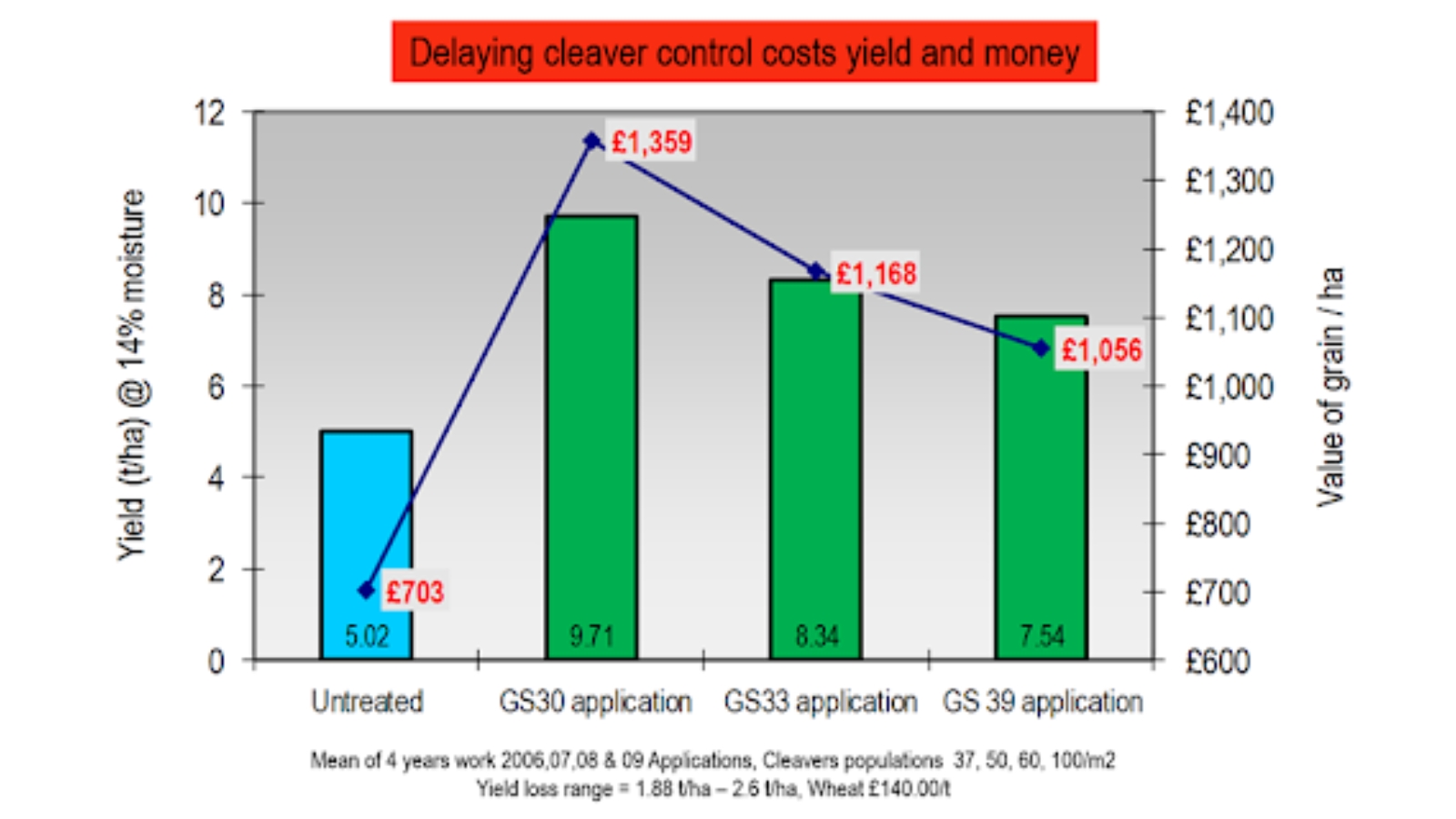
How do I control cleavers?
Cultivations encourage germination and cleavers cannot be controlled purely by cultural methods. Mechanical and tine weeders can be used to remove a proportion of emerged cleavers within the wheat crop.
A number of herbicide solutions are available from Corteva agriscience to control cleavers in cereal crops.
Zypar Herbicide
GS13-45 (up to 30th June)
Pixxaro EC Herbicide
GS13-45
Spitfire Herbicide
GS13-45
Starane XL Herbicide
GS13-45